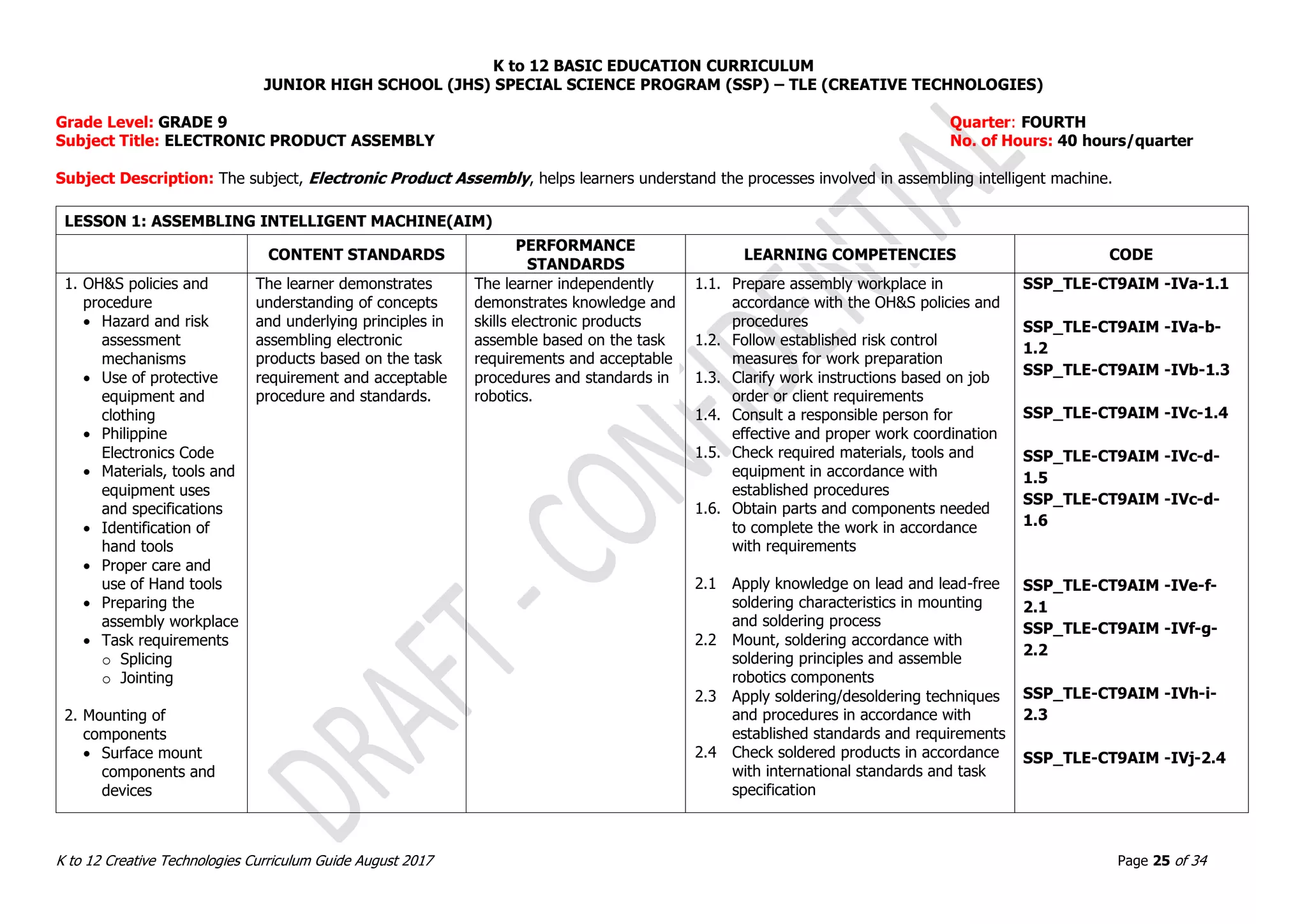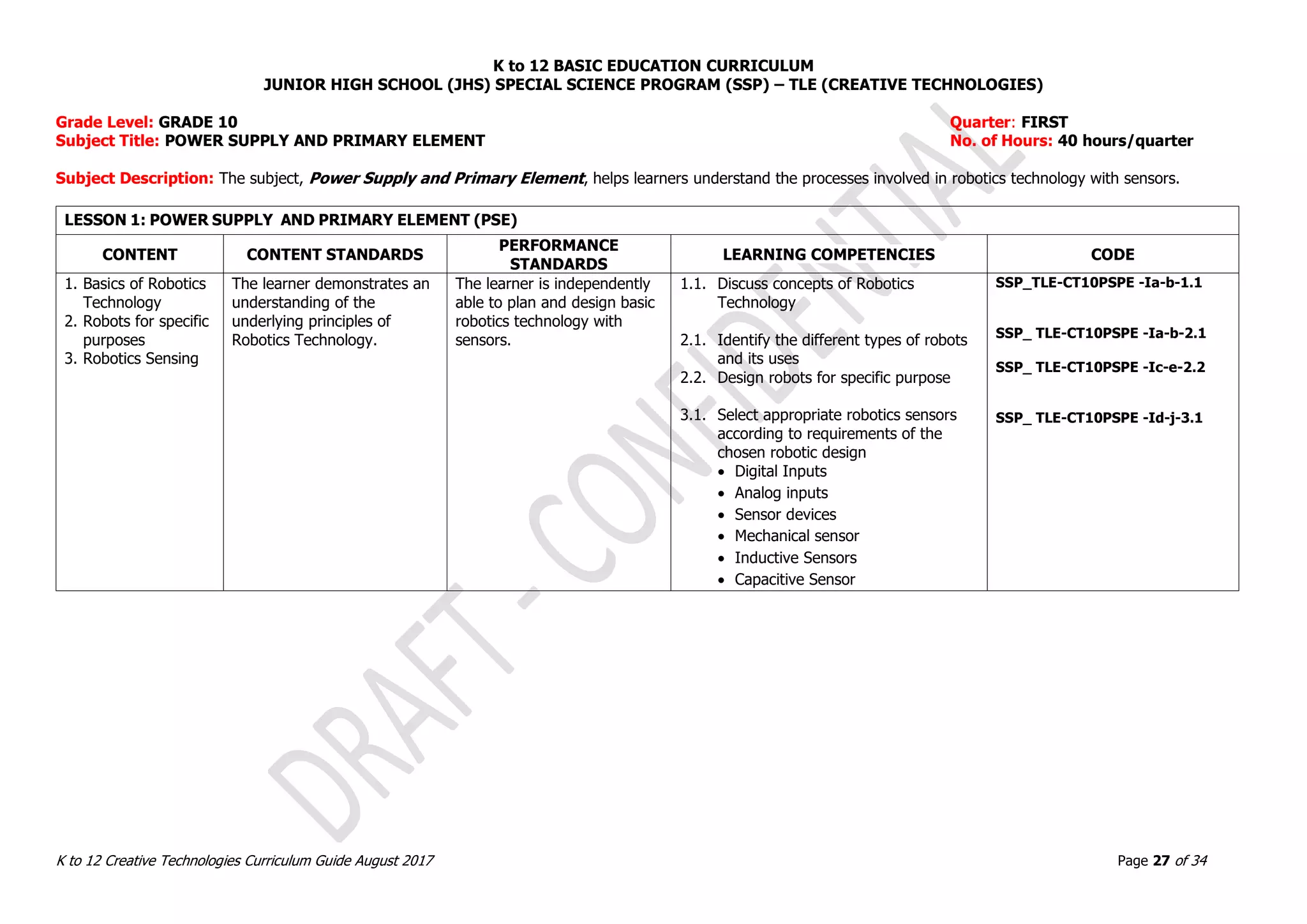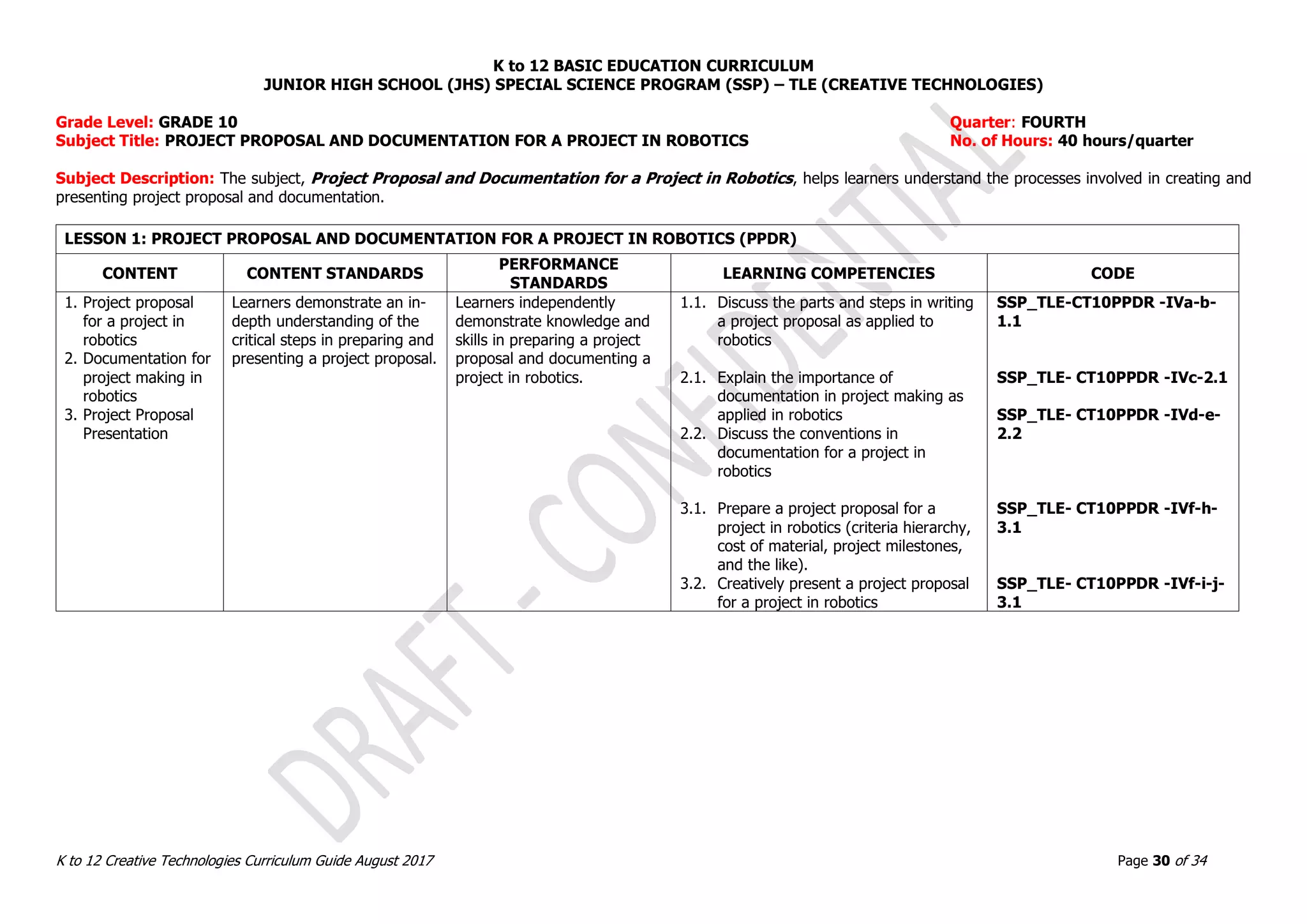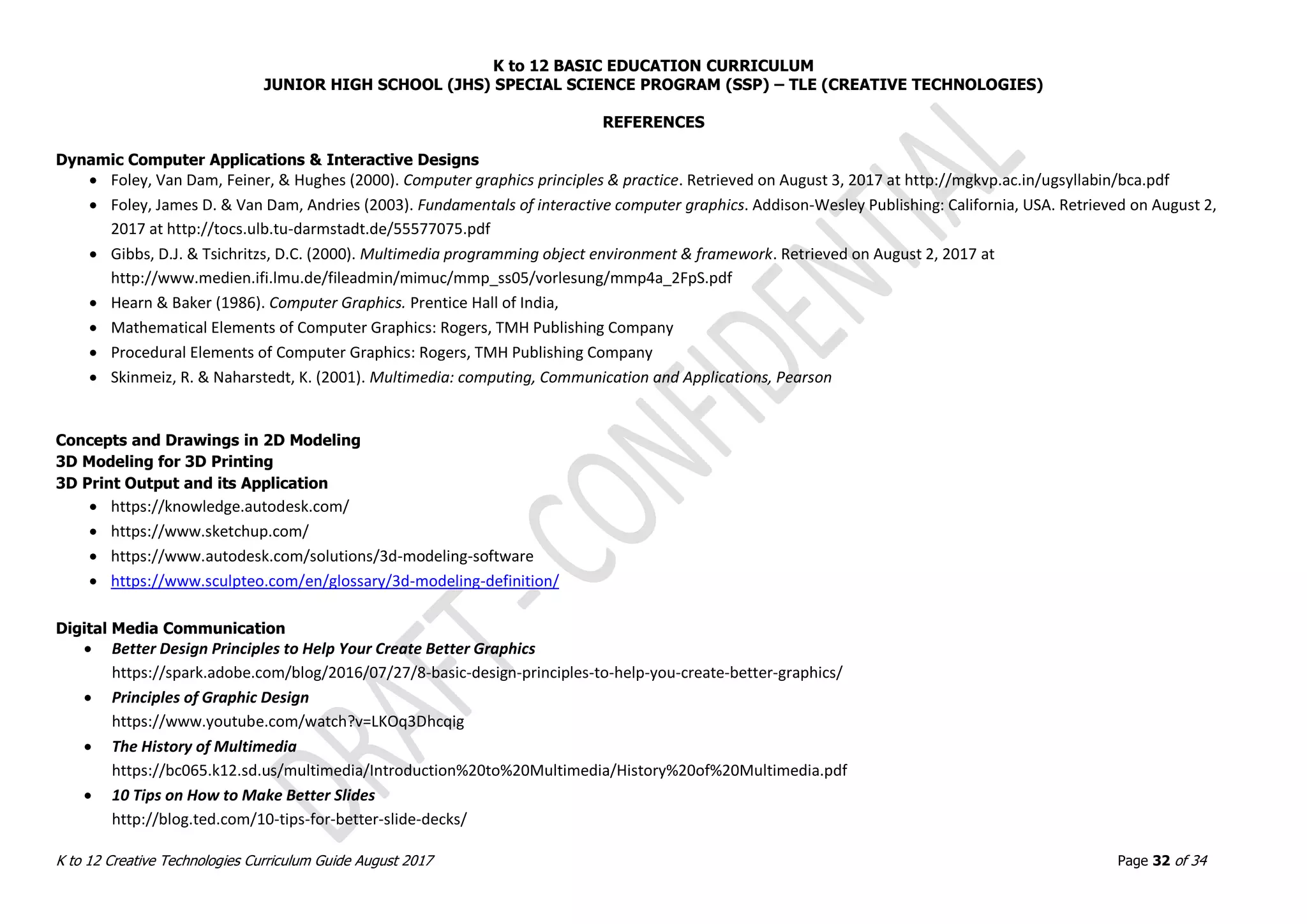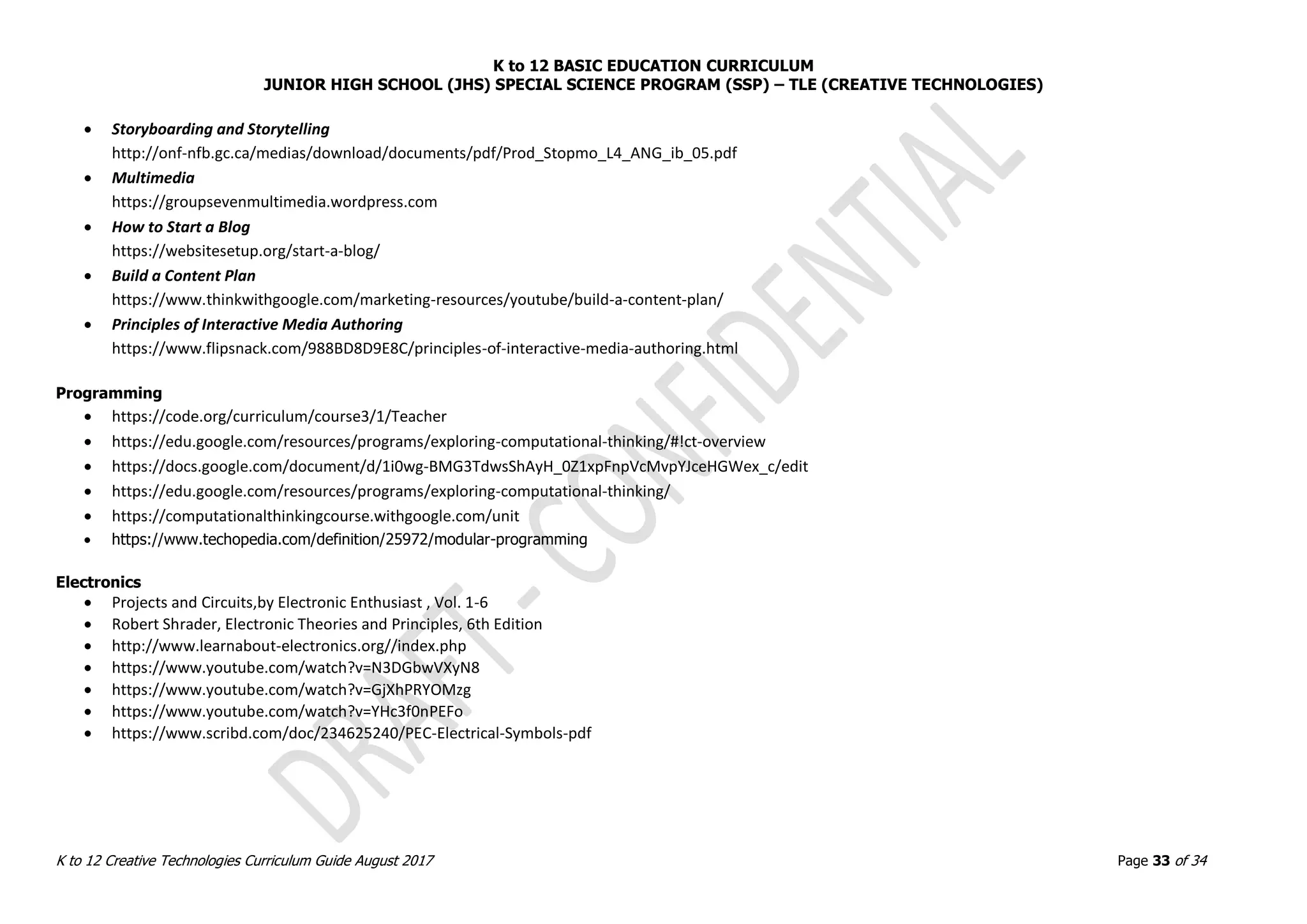This document provides the curriculum guide for Creative Technologies, a subject under the K to 12 Junior High School Special Science Program in the Philippines. It outlines the conceptual framework, key stage standards from Grades 7 to 10, grade level standards, and sample lessons. The curriculum aims to develop students' technological proficiency through project-based learning involving computer applications, product design, robotics, and occupational safety. It emphasizes acquiring skills for lifelong learning and entrepreneurship.
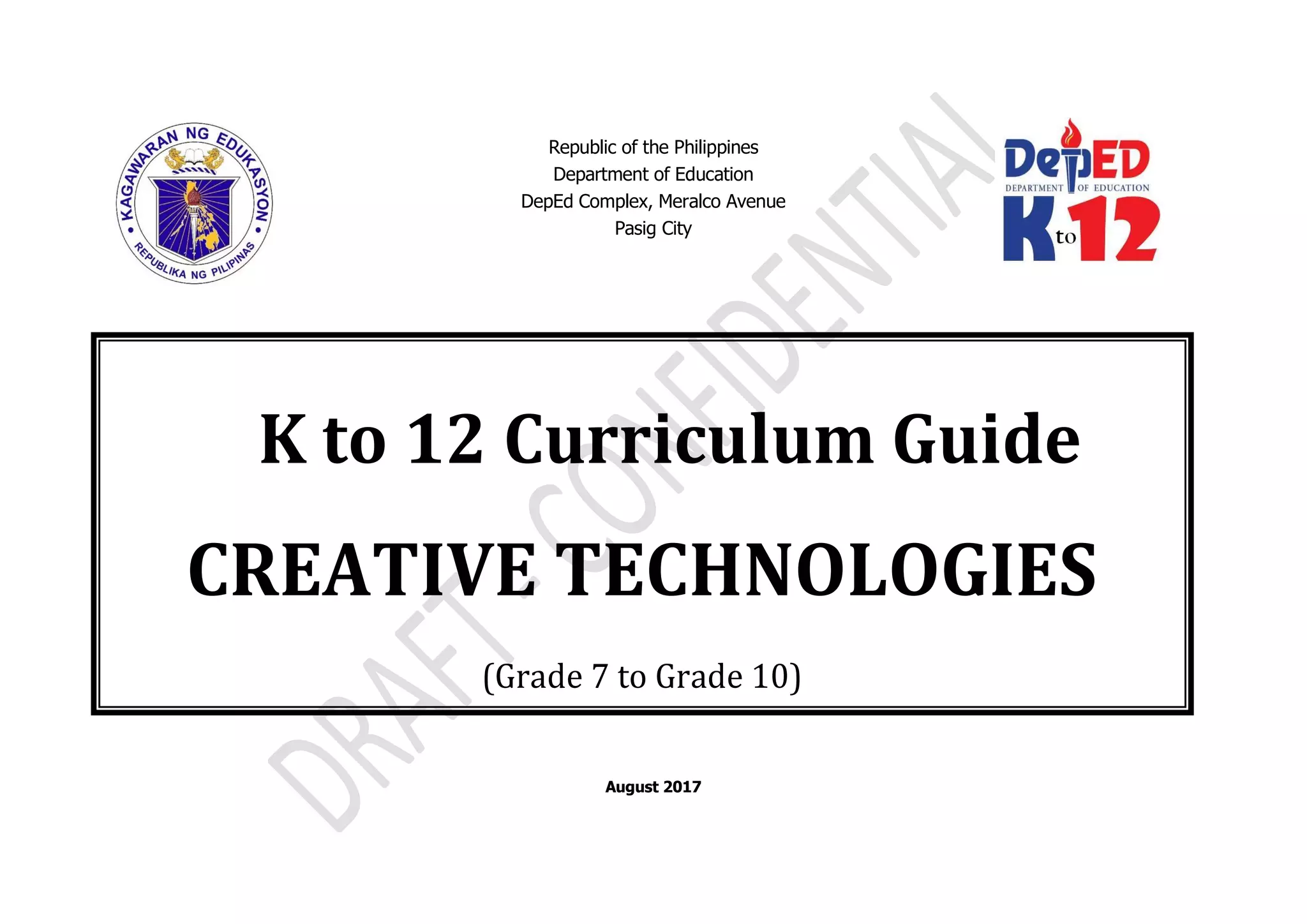
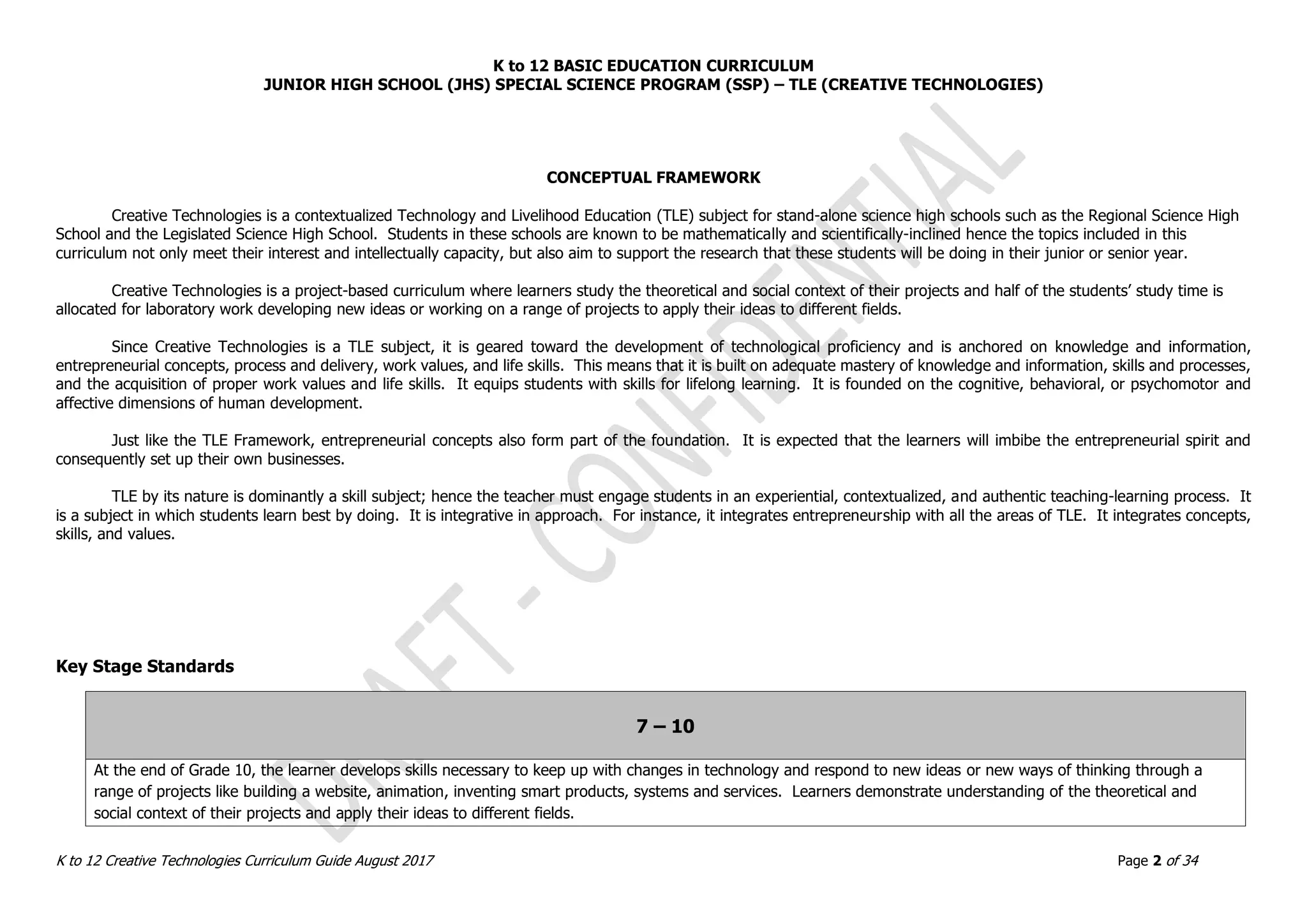
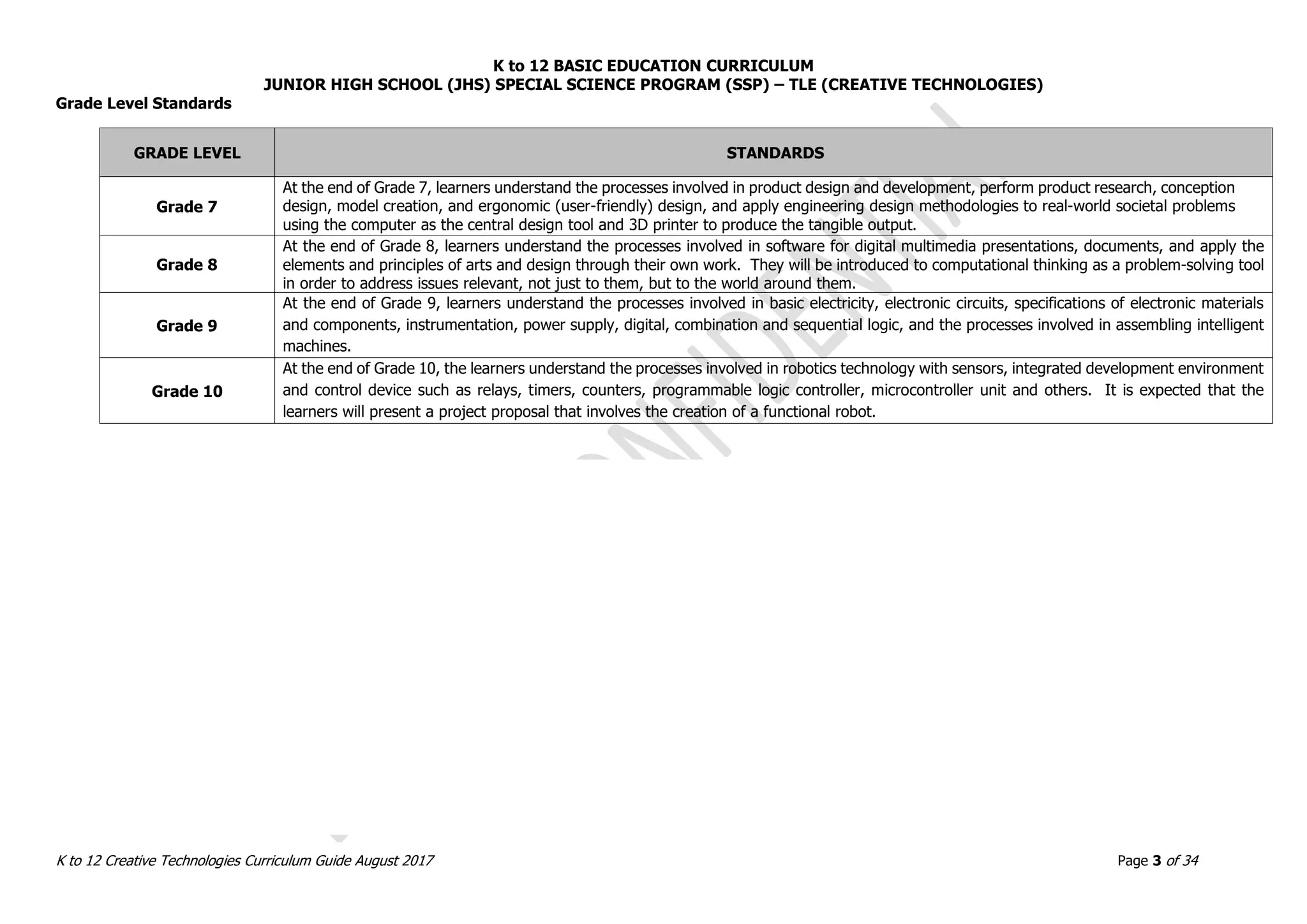
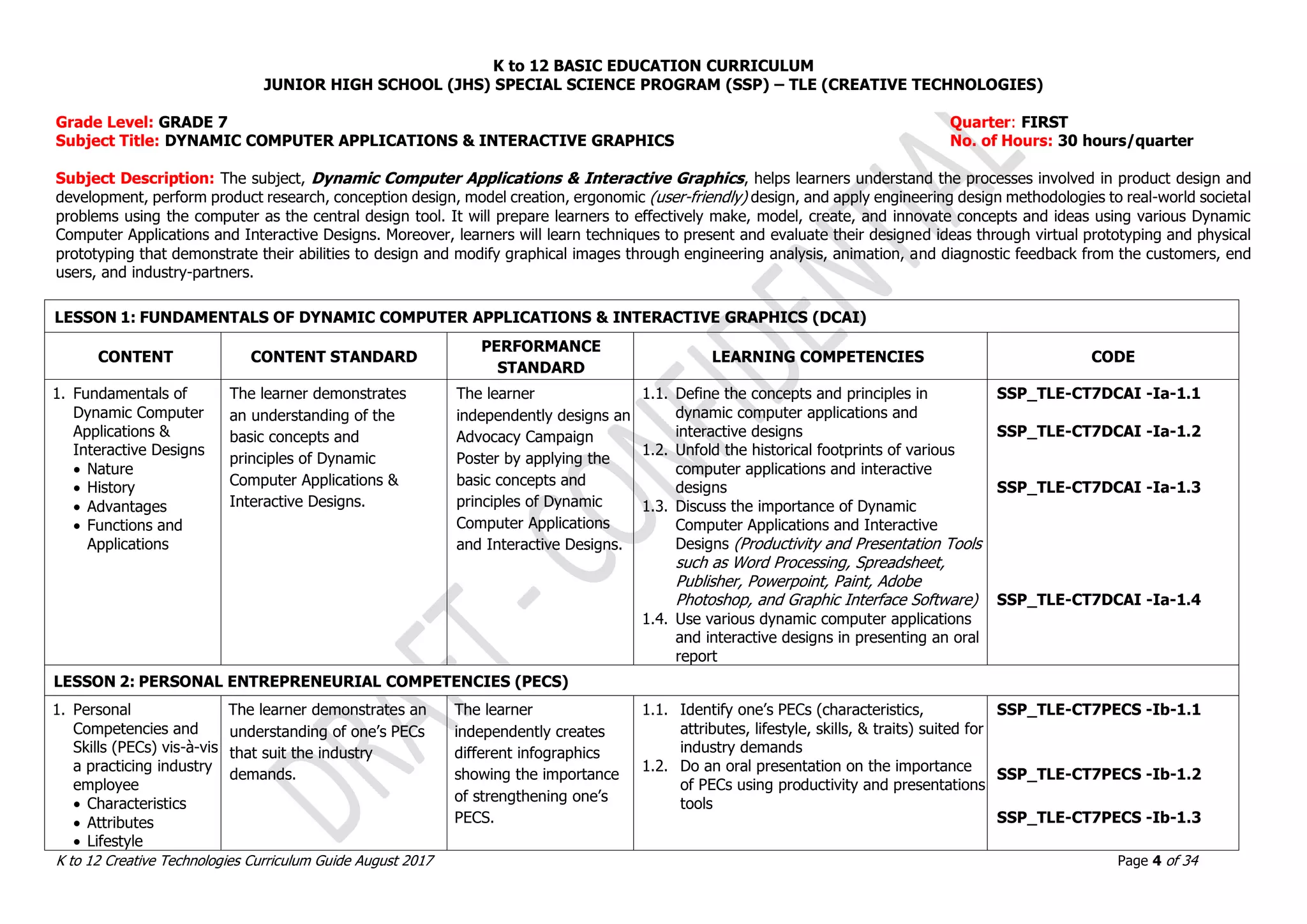


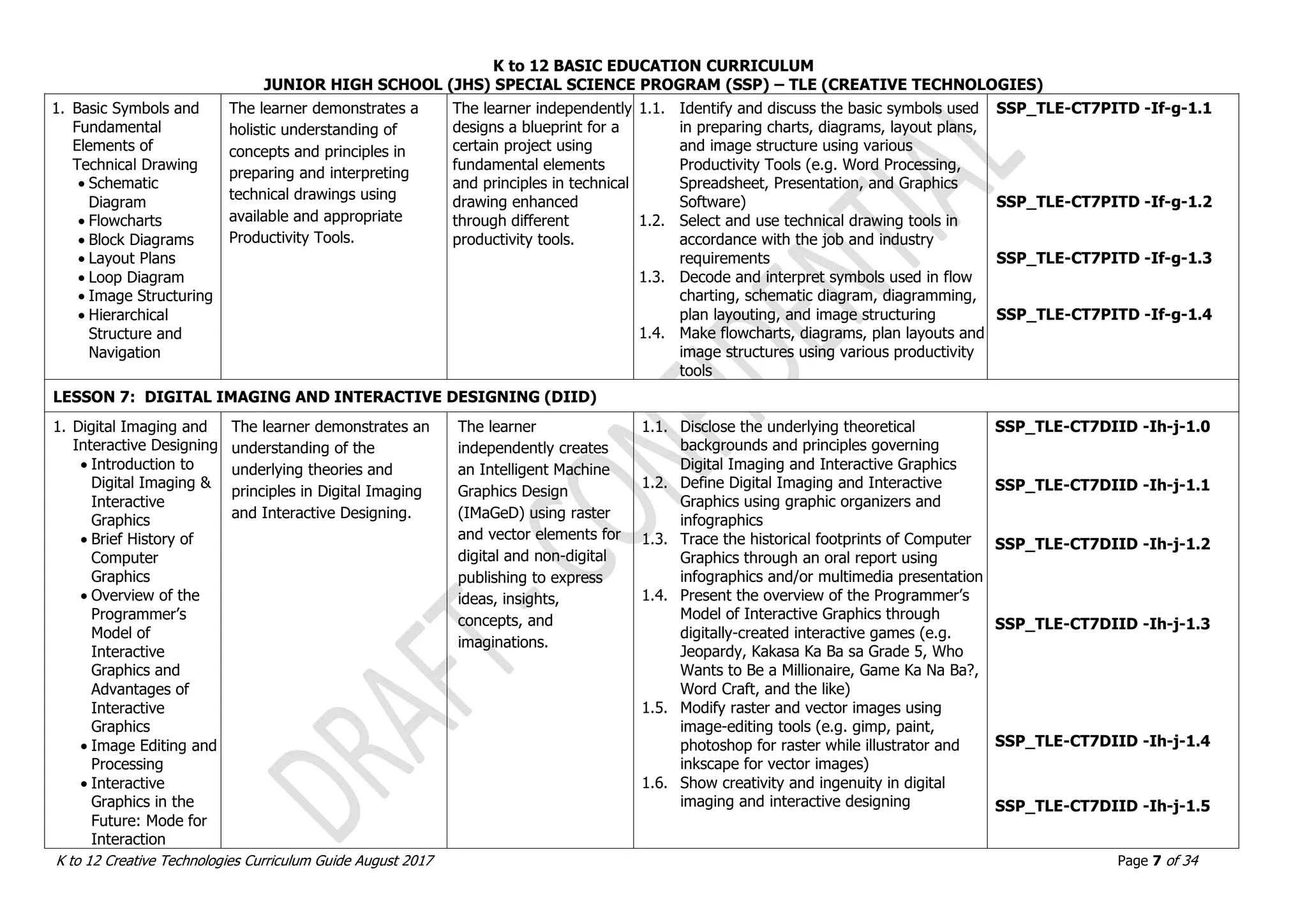

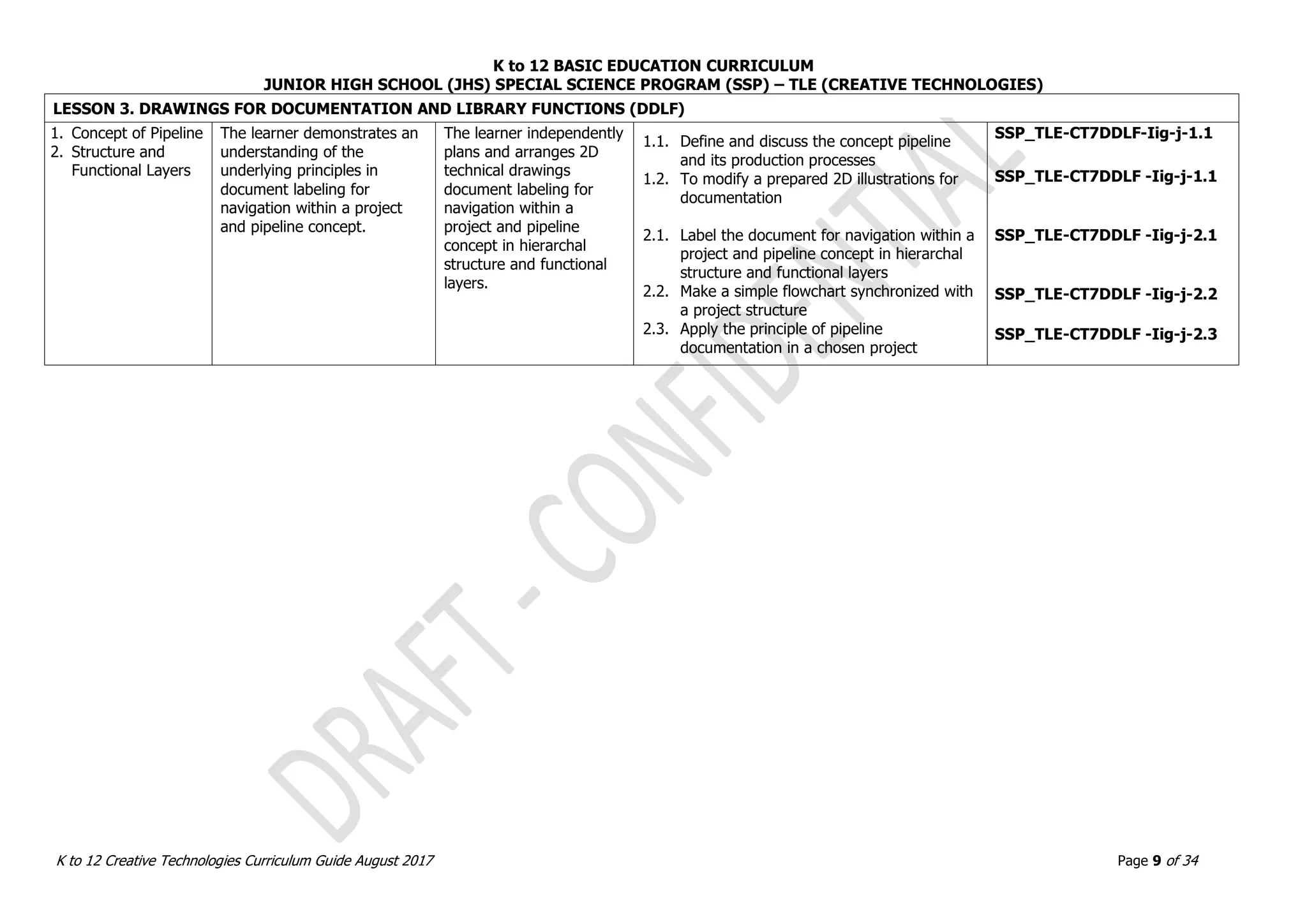
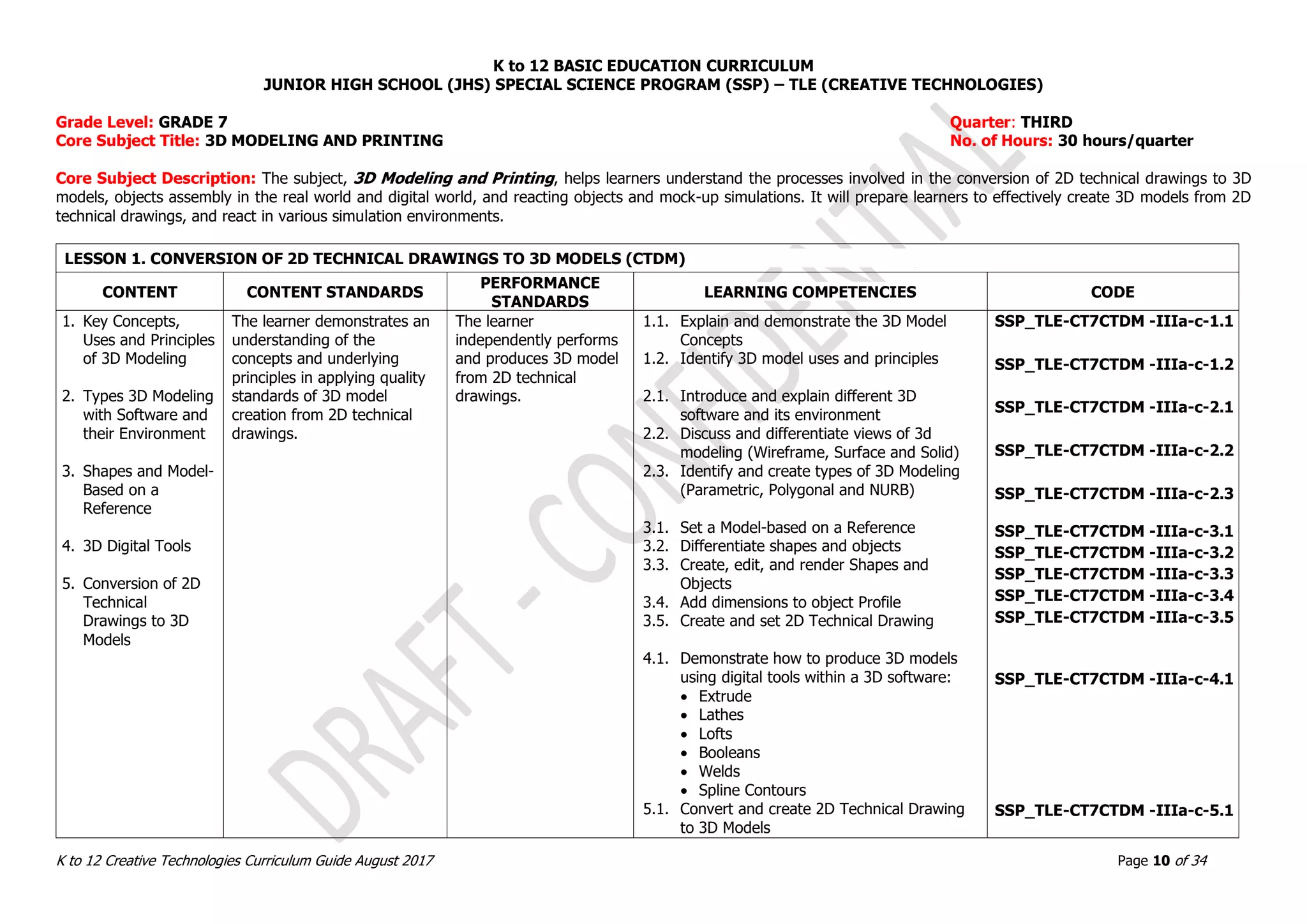
![K to 12 BASIC EDUCATION CURRICULUM
JUNIOR HIGH SCHOOL (JHS) SPECIAL SCIENCE PROGRAM (SSP) – TLE (CREATIVE TECHNOLOGIES)
K to 12 Creative Technologies Curriculum Guide August 2017 Page 11 of 34
LESSON 2. OBJECTS ASSEMBLY IN REAL WORLD AND DIGITAL WORLDN (OADW)
1. Real World Objects
Assembly vs.
Digital World
Objects Assembly
2. Techniques in
Adding Dimensions
of an Object using
3D Models
3. Methods in 3D
Model Objects
Assembly
The learner demonstrates an
understanding of the
underlying principles in
applying quality standards of
real and Digital 3D model
objects assembly.
The learner
independently produces
and assembles 3D
model objects.
1.1. Explain and demonstrate real world and
digital world [This is unclear.]
2.1. Identify measuring tools in the real world
and digital world
2.2. Explain and identify hinges and pivots
2.3. Create hinges and pivots in the real and
digital world
3.1. Assemble two or more objects in the real
world
3.2. Assemble two or more objects in the digital
world
SSP_TLE-CT7OADW -IIId-f-1.1
SSP_TLE-CT7OADW -IIId-f-2.1
SSP_TLE-CT7OADW -IIId-f-2.2
SSP_TLE-CT7OADW -IIId-f-2.3
SSP_TLE-CT7OADW -IIId-f-3.1
SSP_TLE-CT7OADW -IIId-f-3.2
LESSON 3. REACTING OBJECTS AND MOCK-UP SIMULATIONS (ROMS)
1. Reacting to Digital
Objects and Real
World Simulations
The learner demonstrates an
understanding of the
underlying principles in
applying quality standards of
real and digital world objects
interaction through
simulations and observations.
The learner
independently
demonstrates
knowledge and skills in
creating 3D models
capable of reacting in
various simulation
environments.
1.1. Simulate and analyze assembled real and
digital objects
1.2. Observe and demonstrate behavior of real
and digital objects at rest and in action
1.3. Determine the accuracy of hinges
1.4. Prepare 3D objects to react to a real world
simulation
1.5. Prepare 3D objects to react to a digital
simulation
Validate and finalize dimensions
Convert objects into STL files
Import STL File into CAD/CAM Software
SSP_TLE-CT7ROMS -IIIg-j-1.1
SSP_TLE-CT7ROMS -IIIg-j-1.2
SSP_TLE-CT7ROMS -IIIg-j-1.3
SSP_TLE-CT7ROMS -IIIg-j-1.4
SSP_TLE-CT7ROMS -IIIg-j-1.5](https://image.slidesharecdn.com/gr-230720134608-d894510e/75/Gr-7-10-Creative-Technologies-pdf-11-2048.jpg)

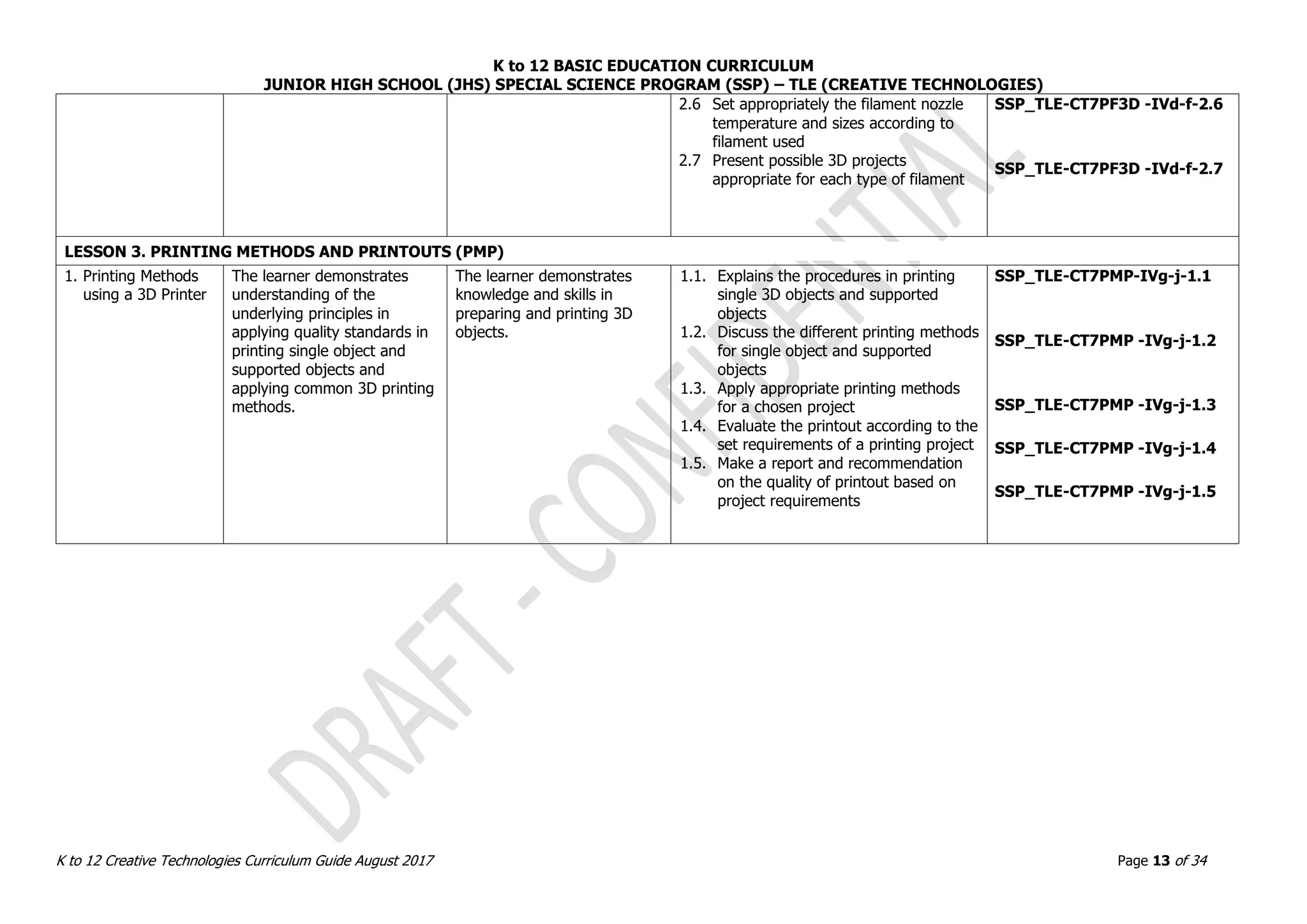

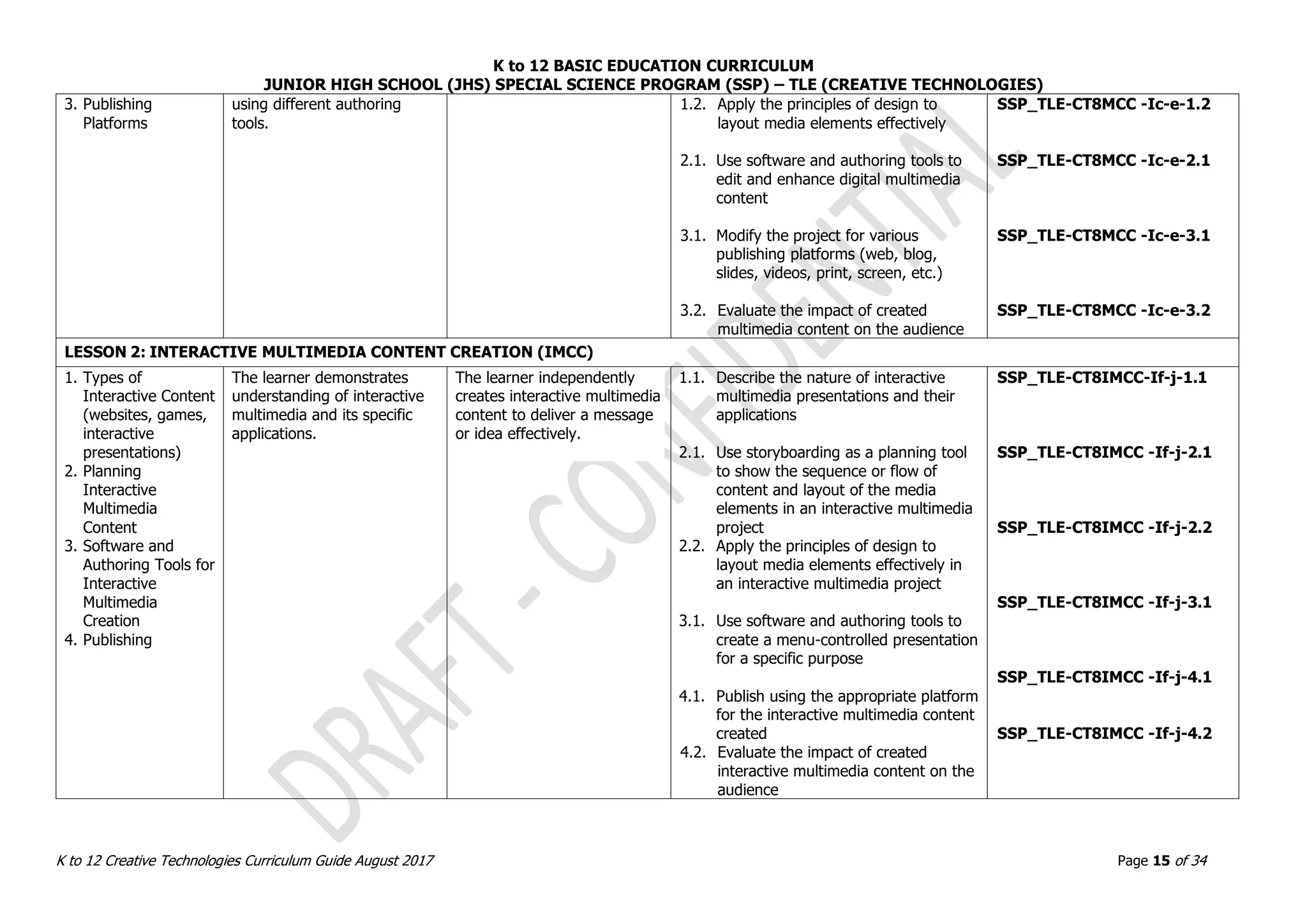

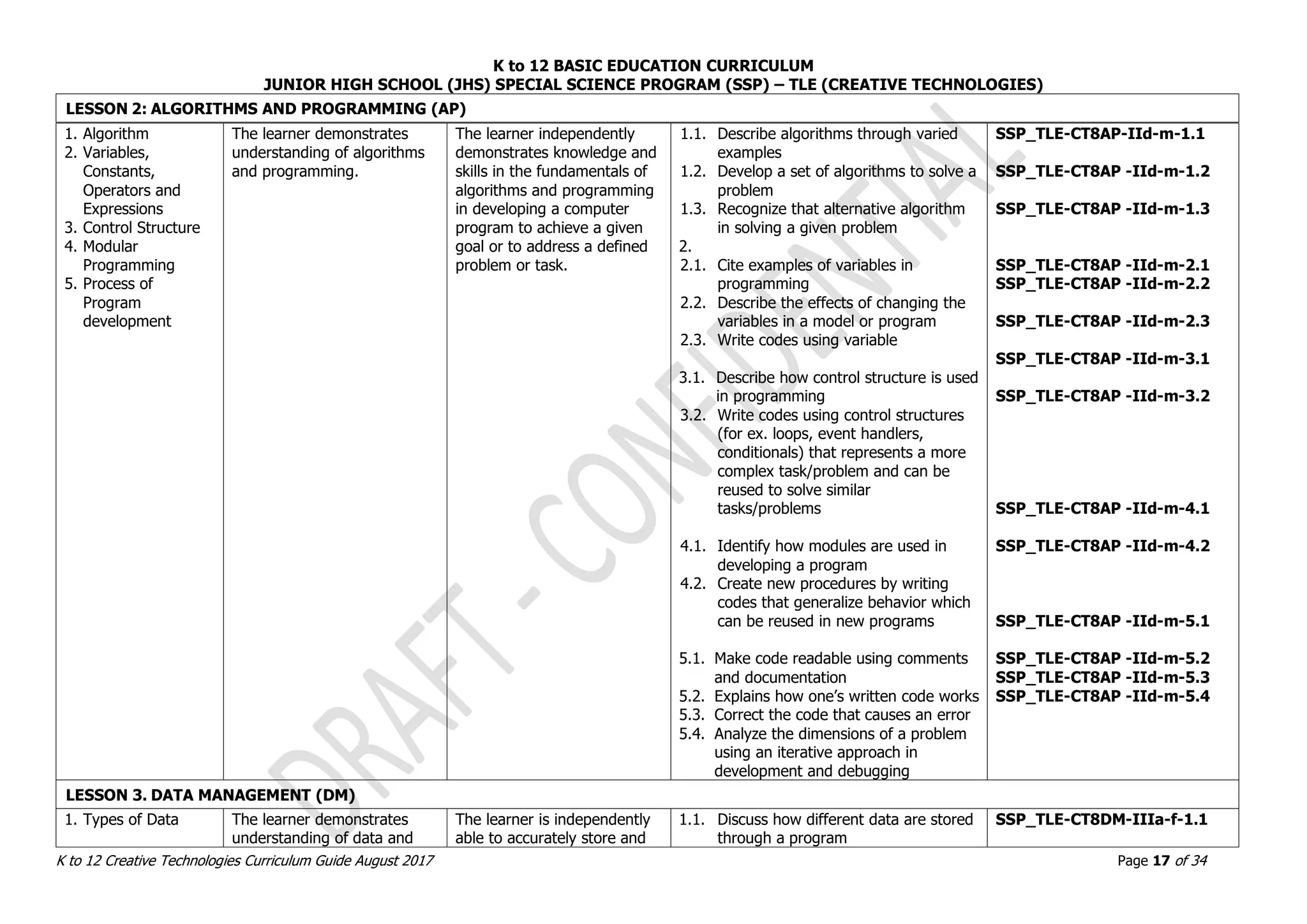
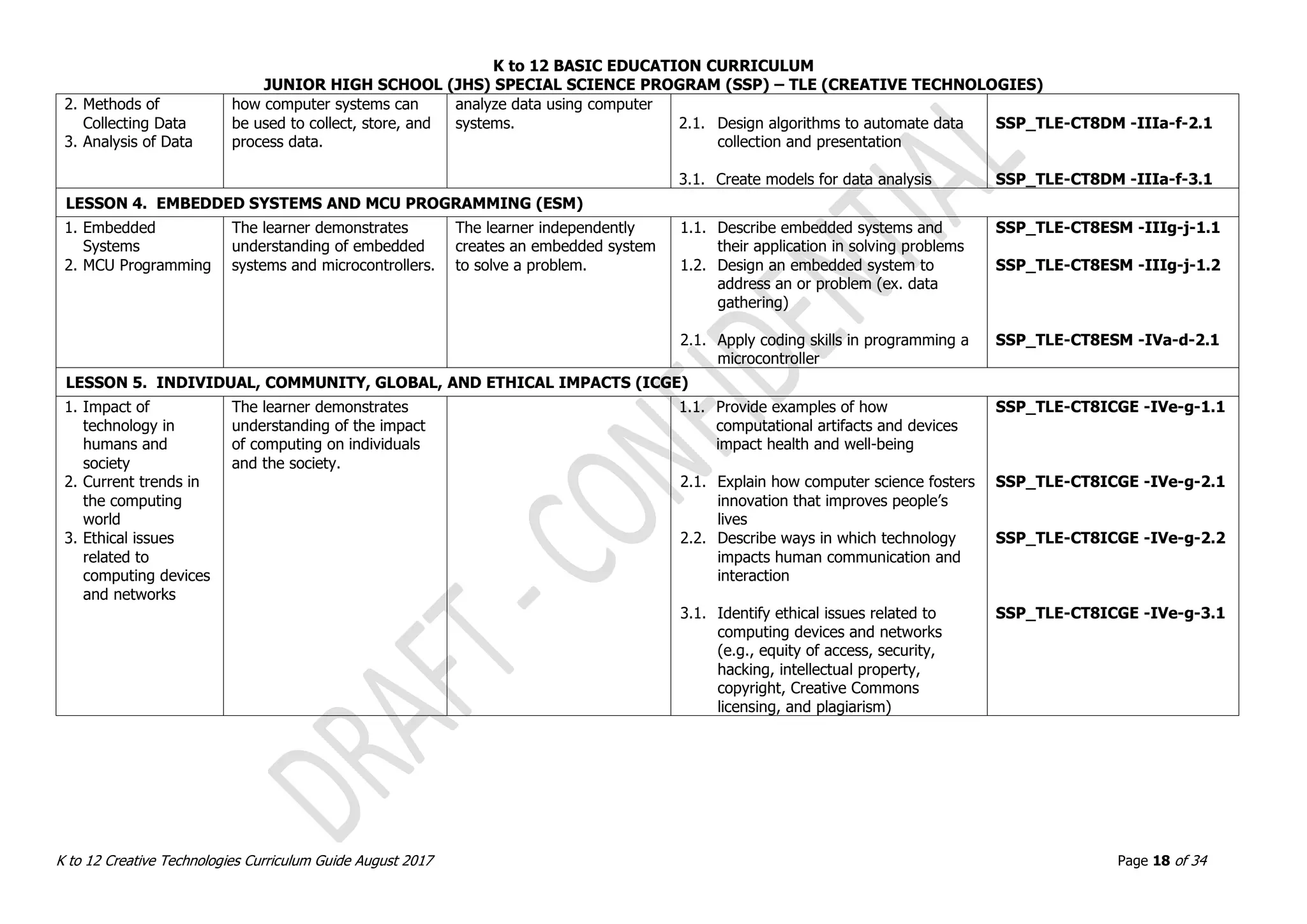

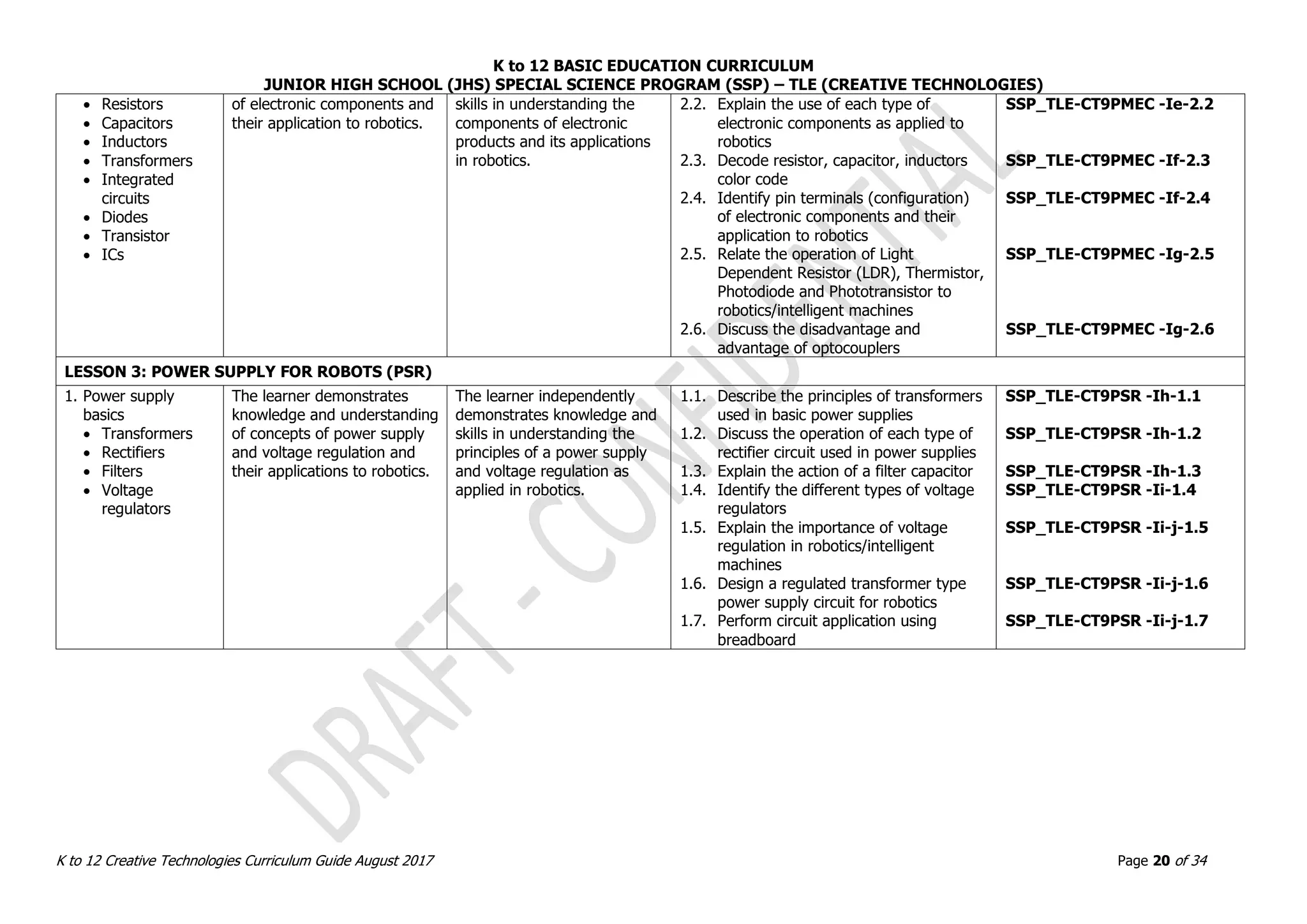
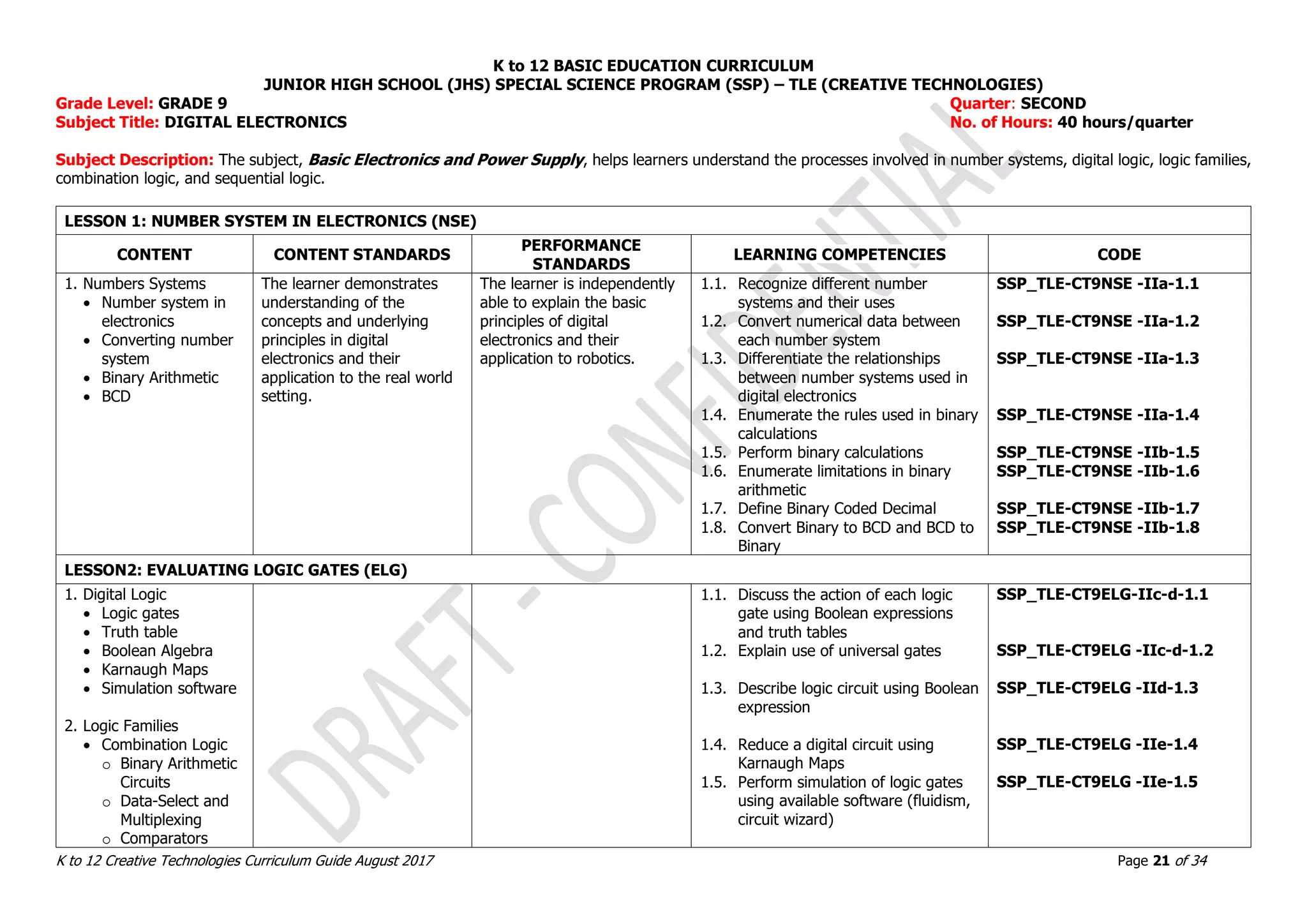
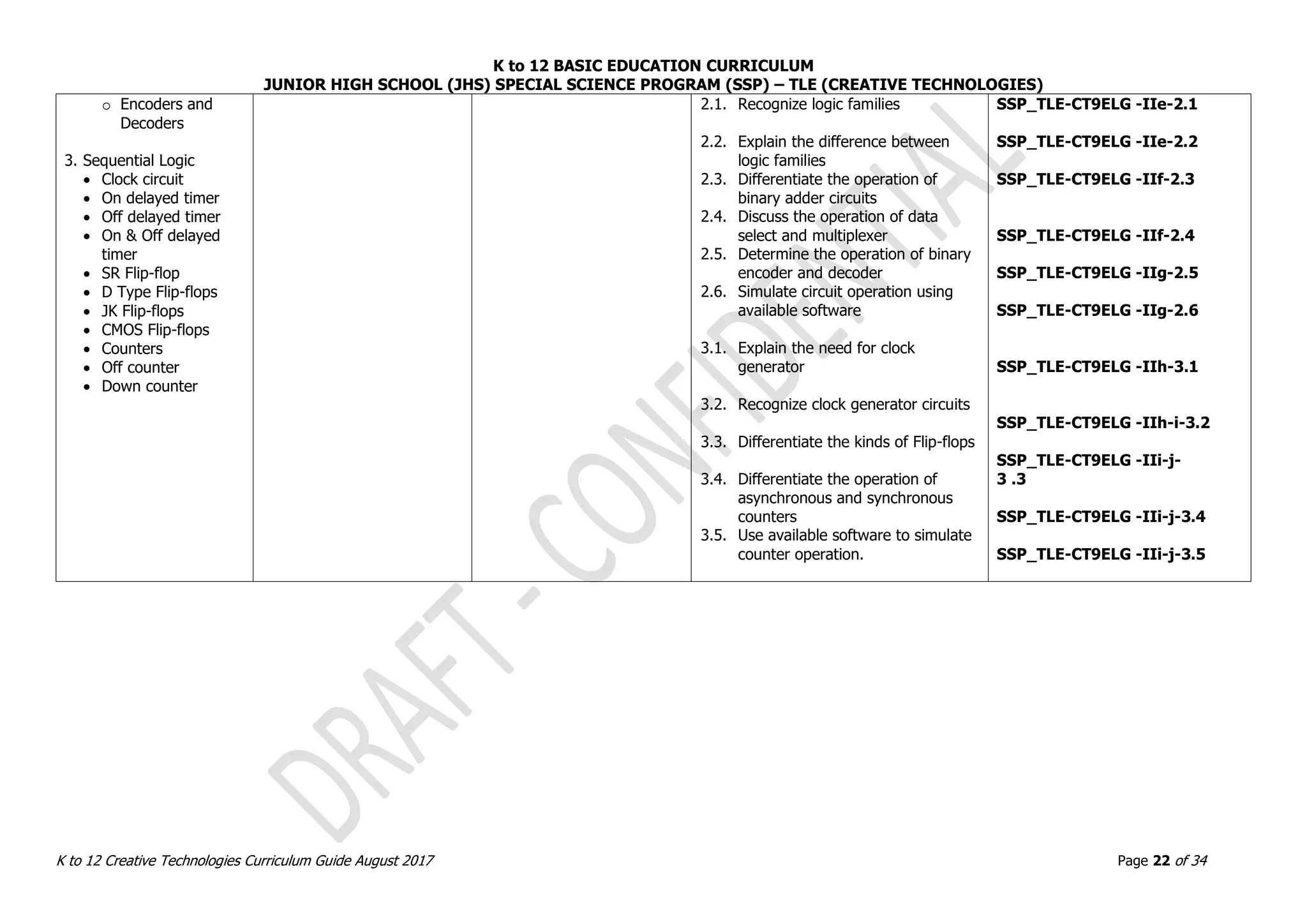
![K to 12 BASIC EDUCATION CURRICULUM
JUNIOR HIGH SCHOOL (JHS) SPECIAL SCIENCE PROGRAM (SSP) – TLE (CREATIVE TECHNOLOGIES)
K to 12 Creative Technologies Curriculum Guide August 2017 Page 23 of 34
Grade Level: GRADE 9 Quarter: THIRD
Subject Title: PCB DESIGN AND FABRICATION No. of Hours: 40 hours/quarter
Subject Description: The subject, PCB Design and Fabrication, helps learners understand the processes involved in number systems, digital logic, logic families,
combination logic, and sequential logic. [Description is the same as previous subject?]
LESSON1: PCB DESIGN AND FABRICATION (PDF)
CONTENT CONTENT STANDARDS
PERFORMANCE
STANDARDS
LEARNING COMPETENCIES CODE
1. Electronics Theory
on PCB Designing
PCB problems
and solutions
PCB
Manufacturing
Information
PCB
characteristics
Design
compliance with
EMI / EMC
PCB Layout and
Artwork
o Common PCB
Layout for
Robotics
Proper disposal
of chemicals
2. Acceptable
methods
Silk screen
Photo transfer
Presentation
3. Fabrication
Etching process
The learner demonstrates
understanding of concepts
and underlying principles in
constructing PCB based on
the task requirement and
acceptable procedures and
standards.
The learner independently
demonstrates knowledge and
skills in constructing PCB
based on the task
requirement and acceptable
procedures and standards
and their relevance to
robotics.
1.1. Verify PCB layout for conformity with the
schematic diagram in accordance with
the layout rules
1.2. Enumerate the characteristics of properly
designed PCB
1.3. Design a PCB layout for robotics
application based on a given schematic
diagram using available software
1.4. Discuss the principles of PCB and designs
and their applications to
robotics/intelligent machines
2.1. Transfer PCB layout to copper-cladded
board following acceptable methods and
standards
3.1. Etch a PCB following acceptable methods
and standards
3.2. Perform visual inspection
3.3. Drill holes for components
3.4. Clean PCB based on standard procedures
3.5. Test functionality of PCB and perform
visual inspection
SSP_TLE-CT9PDF -IIIa-1.1
SSP_TLE-CT9PDF -IIIa-1.2
SSP_TLE-CT9PDF -IIIb-d-
1.3
SSP_TLE-CT9PDF -IIIe-1.4
SSP_TLE-CT9PDF -IIIf-2.1
SSP_TLE-CT9PDF -IIIg-3.1
SSP_TLE-CT9PDF -IIIg-h-
3.2
SSP_TLE-CT9PDF -IIIh-3.3
SSP_TLE-CT9PDF -IIIi-j-
3.4
SSP_TLE-CT9PDF -IIIi-j-
3.5](https://image.slidesharecdn.com/gr-230720134608-d894510e/75/Gr-7-10-Creative-Technologies-pdf-23-2048.jpg)

